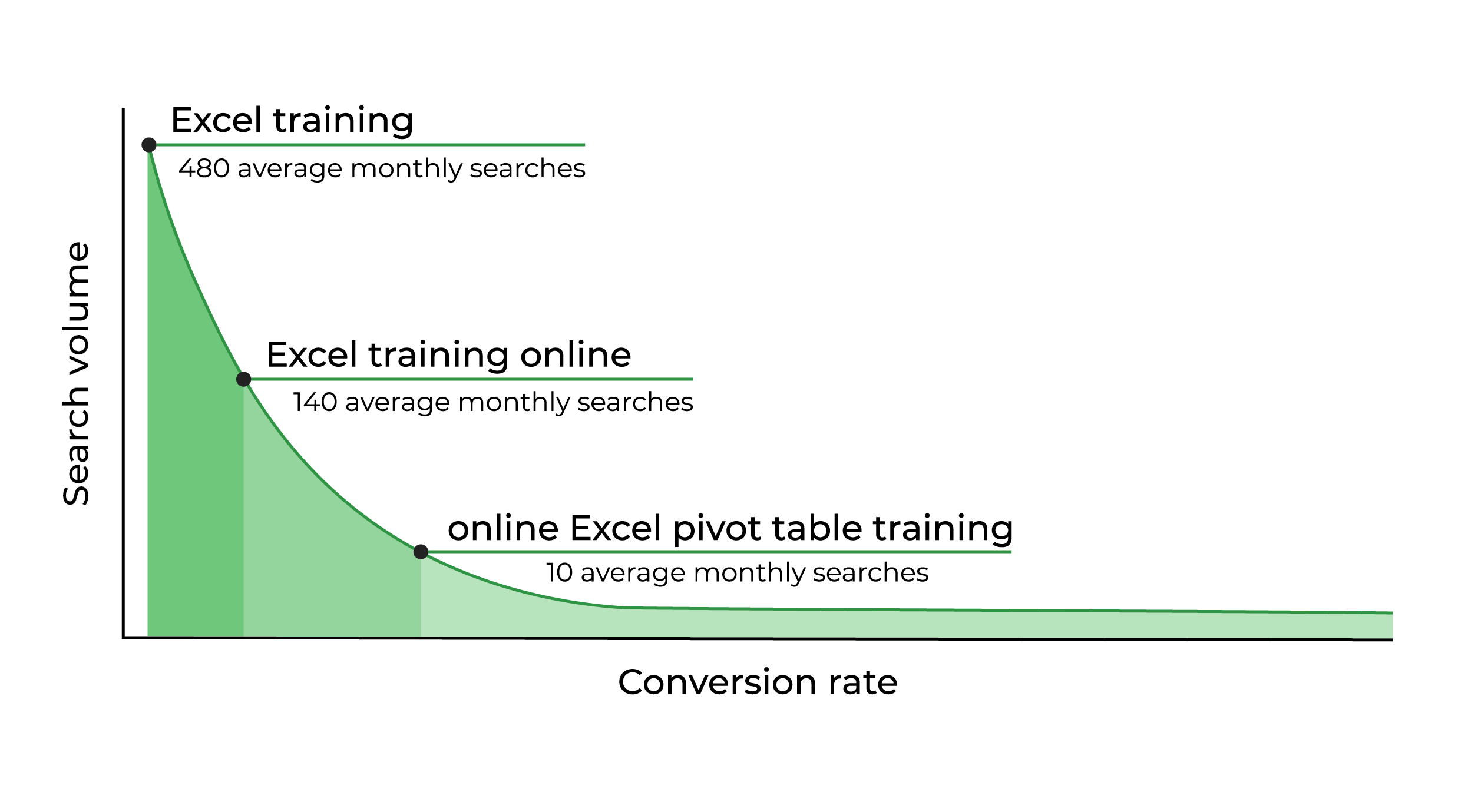How to Do a Keyword Research
Every day, millions of queries on different topics are made on the web. Behind each of them is an individual with a specific question, need or problem that has to be answered as quickly and accurately as possible by search engines. To do this, the robots analyze the terms used in the request and display a list of sites that they believe are most likely to help the Internet user.
As a content creator, your goal is therefore to find out what words your personas use when they search the web, so that you can optimize your site according to their intent. How? By researching and choosing relevant keywords.
Performing a keyword search will help you not only understand how Internet users make their queries, but also to find the words for which you should rank to meet their needs. Ultimately, when combining quality content with keywords research, you will attract qualified leads to your site organically.
The 5 Step Process of a Keyword Research
1. Identify Generic Keywords to Build a Glossary Around Topics Associated With Your Industry
The first step in keyword research is to perform a brainstorming session to list words related to your industry, your services and your products.
During this session, consider the topics that are important to your personas and customers as well as the themes featured on your website. Build a glossary of keywords around these main topics and define a list of questions that prospects might ask about your business.
For example, for our client le CFO Masqué, which offers specialized training on Microsoft products, we started from global themes such as “Power BI”, “Excel” or “Training” and elaborated on these terms. Through our research, we’ve found keywords that are commonly typed by users in search engines.
2. Use Tools to Analyze Your Keywords and Find Other Opportunities
Once you have a good list of keywords, you will need to analyze the search volume and the competition attached to these terms. This data will allow you to finalize your keyword selection for which you’d like to rank.
To perform the analysis, you will need tools such as SEMrush, Ahrefs or Google Keyword Planner. They will supply you with all the relevant information required for a keyword research. These tools will also suggest other keywords associated with your original one. This will allow you to discover more words on which you could focus and try to rank for.
I suggest you create a file which groups your finds and facilitates the selection process afterwards. In your filer, include the following information:
- The keyword
- The search volume
- The difficulty score (how hard it is for this keyword to rank)
- The search intent (informational, commercial, transactional)
- The number of results generated by search engines.
Other interesting information to add in your file is Search Engine Result Pages (SERP) Features. These refer to organic result types other than the traditional ones (e.g. Google image, featured snippets, reviews, etc.).
Once your file is assembled, you can begin your analysis. Search for all the keywords you previously listed and write down (or export) the information mentioned above. Add all keywords that are relevant to your business and your customers.
At this point, don't be surprised if the keywords you listed have a high search volume and an equally high difficulty score. The most generic terms are often the most competitive. However, this does not mean they are not good. You can use them to create long-tail keywords.
Long-tail keywords are more specific, contain more words and usually have a lower search volume and lower difficulty score. That being said, they generally attract more qualified traffic to your site.
3. Define Long-Tail Keywords: An Essential Part of a SEO Strategy
Long-tail keywords are a group of targeted words, usually made up of more than three terms. It can present itself in many formats, such as expressions or questions. For example: "how to extract data from an Excel table" or "calculation of the depreciation rate in Excel" are long-tail keywords that allow Internet users to obtain precise answers.
Moreover, 70% of queries are made with long-tail keywords, so they are essential to your SEO strategy.
How To Find Long-Tail Keywords?
There are several ways to find long-tail keywords. Here are four of them:
3.1. Using Search Engines’ Suggestions
It doesn't matter what your search engine is. Google, Bing, Firefox, Safari, or any other, it may show you long-tail keywords when you are typing a query. You know those suggestions that appear when you write something in the search bar to help you refine your query? Well they can be used as long-tail keywords.
But that's not all. You can also consult the "People also asked" and "Related searches" sections on Google to find other ideas. Insert these terms in the search bar and discover even more complementary terms!
3.2. Adding Qualitative Terms to Your Keywords
To create long-tail keywords, you can add qualitative terms to your global keywords to make them more specific. For example, for our client Le CFO Masqué, we took the keyword "Excel training" and added the terms “online”, “advanced” and “pivot table” to get the long-tail "Advanced online Excel training on Pivot Tables". This type of exercise will help you position yourself on more global terms, while generating qualified traffic.
3.3. Specifying Your Location
Nowadays, Internet users expect search engines to provide them with results based on their geolocation. Local searches are becoming increasingly popular and that's normal: no one wants to travel miles to get a product or service! By including your location in your long-tail keyword, you add a geolocation factor that will allow you to attract highly targeted, but also qualified traffic.
3.4. Using a Question Formulation
Questions beginning with who, when, where, how, why, etc. are also good ways to generate long-tail keywords. Today, 14% of Google searches are questions. This percentage should increase in the next few years with voice searches taking up more and more space. Crafting content around questions will not only help you attract qualified traffic, but also optimize your content for the future. Tools such as SEMRush and AnswerThePublic may allow you to generate lists of questions associated with your desired keywords.
4. Sort Your Keywords and Categorize Them According to Their Theme
Once you have grouped all your keywords in an Excel file, you will need to take a moment to sort them and categorize them by theme. This will help you create semantic cocoons, a tactic that is highly recommended in SEO.
The semantic cocoon is an internal networking technique that consists of linking together pages that handle the same topic.
At this point, you can also group your keywords based on your customers' buying journey. The more generic a keyword, the earlier the visitor is in its decision-making process. The more specific the search term, the more the Internet user is ready to make a purchase. This means that you’ll need to make sure to choose keywords for each stage of the purchase journey, in order to attract all types of consumers.
5. Select Your Final Keywords
The time has come to choose the keywords on which you want to position your content. There is unfortunately no secret way to determine the words that will allow you to attract the most organic traffic possible. You will need to pick the ones you believe will work best for your site and test them out. The goal is to choose words that are relevant to your business, that have a good search volume, but a low level of difficulty.
If a keyword has a high search volume and a high difficulty level, the chances that you will be able to rank at the top of the SERPs for that term can be slim. And if you choose a keyword with low search volume and a low difficulty level, you will likely rank well, but not gain as much visibility.
You have to find the fine line between the two, while keeping in mind the intention of your personas and your service offer. However, remember that you can use difficult terms to create long-tail keywords to combine the best of both worlds.
One thing to keep in mind is that no matter the chosen keywords, your content has to be good. It has to be rich in relevant information, bring something new to the table and provide a solution to a user’s needs. If your content has no added value, the chances of it ranking are limited.
What to Do Once the Keyword Research is Complete?
Once you have determined your keywords and the themes for which you wish to rank, you will have to do what is called keyword mapping. This helps assign your keywords to the right pages on your site. Then you will have to optimize your pages and your content according to the chosen keywords.
Finally, you will want to develop a content strategy in order to create new pages and articles related to your keywords. Within this new content, you’ll want to build semantic cocoons, which will help strengthen your positioning on your selected topics.
As you can see, keyword research is only the first step in a long continuous process. This will be the basis, not only of your SEO strategy, but also of your long-term content strategy. As with any SEO tactic, the results could take several weeks or even months to show up on your site. But it's hard work that can definitely pay off.
Alexandra Thibaudeau
Holder of several HubSpot Academy certifications, she uses her expertise to ensure the creation and development of the company's Inbound Marketing strategy.






